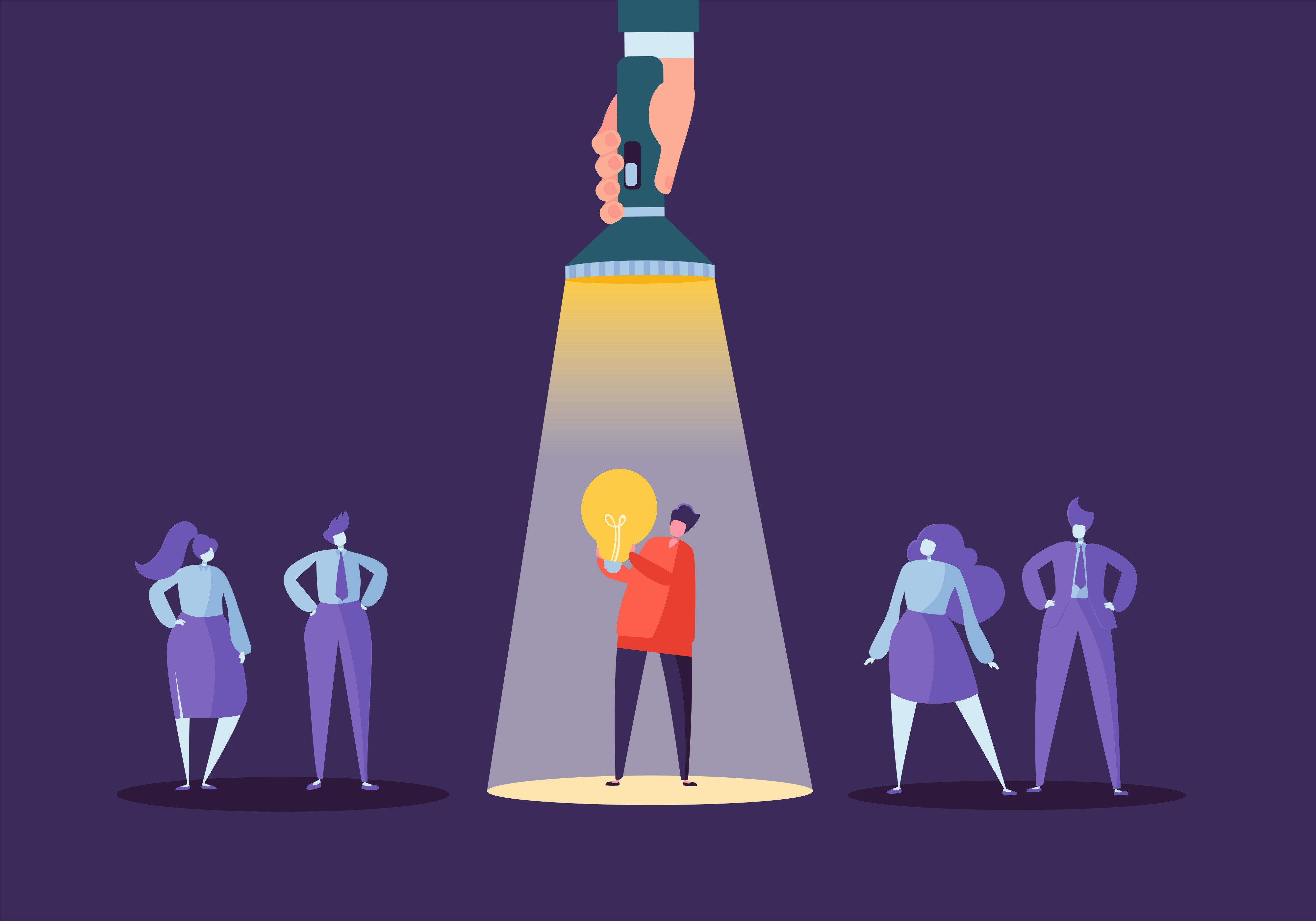Hiring looks messy because it mixes marketing, operations, and psychology in one pipeline, and most teams try to power through that mess with extra meetings and manual checks. Artificial intelligence does not make the chaos disappear. It makes the system observable, then optimizable. Once recruiting is treated like a product funnel, AI becomes the instrumentation that reveals what is happening, the routing engine that moves each candidate to the right step, and the steady hand that keeps both candidates and hiring managers progressing without constant handholding.
The first visible shift appears in sourcing. Traditional sourcing leans on keyword matches and job titles that often conceal what people can actually do. AI moves the logic from titles to skills. An embedding model represents a role as a skills vector, then searches for adjacent talent in places that boolean strings miss. The outcome is not simply more profiles. It is more relevant profiles with non obvious overlaps. A sales engineer who built internal tooling, a community manager who automated workflows, or a QA lead who mentored junior developers may all map closely to the underlying competencies a team needs. Precision at the top of the funnel shortens the calendar by days and reduces the habit of blasting a role to everyone in the hope that something lands.
Job descriptions change from legalistic lists into readable promises about outcomes. AI refactors jargon into clear responsibilities, expresses seniority signals in a consistent way, and tunes language to the market the company wants to reach rather than the org chart it already has. If a team is hiring across several countries, the model localizes benefits and compliance language while preserving the role’s core. Conversion begins on the job page. Clean copy increases applies among the right candidates and quietly dissuades the wrong ones from entering the funnel at all.
Screening then provides the first step change in throughput. Parsers that extract entities from resumes have existed for years. The real advantage now is consistency. A model applies the same rubric to every candidate without context fatigue or mood bias. False negatives that occur when a reviewer is rushed decline. False positives that appear when a brand halo is strong also decline. When the prompts force the extraction of evidence against the specific competencies that matter for success, the model produces a structured brief for the hiring manager rather than an opaque score. Time to first decision drops, and managers stop asking for five more resumes because they finally see comparative signal presented in the same format for each person.
Assessments benefit from the same structure. AI does not need to invent puzzles. It turns real work into compact tasks that test how a person thinks under constraints. For engineering, it may present a small code diff and ask for a review with explicit tradeoffs. For sales, it can simulate a short discovery call with a buyer who pushes back on price and timeline. For design, it can ask for a critique of a flawed brief with clear limitations. The model generates variations, enforces grading criteria, and flags likely plagiarism. Candidates avoid the frustration of lengthy speculative projects that no one reads. Teams collect repeatable evidence that correlates with on the job behavior.
Interviews improve when the coordination debt shrinks. AI scheduling proposes windows that respect interviewer load, time zones, and the intended order of interviews. If someone cancels, the system reroutes and updates materials without waiting for a human to rework the puzzle. During calls, assistants capture notes, tag competencies, and track follow up questions. The point is not to replace interviewers. The point is to end the ritual of scattered notes and memory driven judgments. At the end of the loop, the team holds a searchable transcript with highlights tied to the rubric, so debriefs revolve around evidence rather than vibes.
Candidate experience rises with a handful of targeted automations. Status updates go out quickly and clearly. A Q and A assistant answers process questions, explains next steps, and shares preparation tips tuned to the role. Offer packets assemble with the correct compensation bands, equity ranges, and location terms. The candidate sees a coherent system rather than an overworked team. Acceptance rates lift when the process feels respectful. Even rejections feel fair when they arrive promptly with the right tone and a short explanation. People remember friction. AI removes it at scale.
Diversity and fairness stop being slogans and start becoming system properties. AI detects drift. If graduates from one school begin to exert outsized influence on decisions, the model flags it. If certain interview questions correlate with adverse impact, the report surfaces it. If the funnel slows for parents returning to work, the data reveals it. None of this eliminates bias by itself. It shifts the conversation from abstractions to the specific place where the process breaks. Teams can then adjust prompts, rebalance sourcing channels, and redesign assessments with a feedback loop that records what changed and what improved.
Speed is the visible win while quality is the compounding win. With a model in the middle, feedback travels. If new hires from a particular channel struggle to pass probation, sourcing vectors update. If a competency proves weakly predictive for success, the rubric shifts. Over time the system learns what the team rewards in practice rather than in theory. That is how quality of hire rises with fewer cycles. The pattern mirrors product development. Instrument, test, iterate, ship, and feed outcomes back into the roadmap.
Costs move in two directions at once. External agency spending falls if the internal funnel produces enough qualified finalists. Internal recruiter time redeploys from logistics to decision support and candidate relationships. Teams still invest in employer brand and community building. They simply stop paying for manual work that machines perform more accurately. The return appears as faster time to fill, lower cost per hire, and less vacancy drag on product and revenue teams. Finance notices. So do engineering and sales when headcount arrives on schedule.
Security and compliance are design problems rather than permanent blockers. Sensitive data stays within the company tenant. Retrieval grounded prompting brings internal policies to the model without pasting private content into prompts. Early screening can mask personal identifiers and reveal them only when needed. Every model decision can be logged with version, template, and inputs. Most human only processes cannot match that level of auditability. The result is stronger documentation for regulated markets and clearer answers during internal or external reviews.
There is a quieter advantage in how managers learn. When AI drafts a scorecard, it forces a hiring manager to define what success looks like at 30, 60, and 90 days. When it assembles interview kits, it exposes duplicate questions and missing competencies across the loop. When it drafts outreach, it demonstrates which positioning resonates with which talent segments and why. People learn faster because the system gives them a starting point and a comparison point, much like an editor improves a writer by providing a solid first pass that can be accepted, rejected, or refined.
Cross border teams see even more benefit. Language models reduce friction in outreach and feedback across English, Bahasa, and Mandarin markets. Cultural tone shifts receive careful handling. A candidate in Jakarta expects a different benefits framing compared with a candidate in Shenzhen. AI rewrites without diluting core meaning and maps salary bands to local market data to avoid anchoring errors. The outcome is a credible first touch and a smoother close.
Internal mobility becomes a practical strategy rather than an aspiration. AI surfaces adjacent fits inside the company before a new role goes to the external market. It reads project histories, manager feedback, and skills growth to suggest matches. The business gains retention and faster time to productivity. The employee gains a path that feels earned and visible. A perfect HRIS is not required. A light layer over documents and task systems already reveals far more signal than most teams expect.
Vendors will pitch all in one platforms. A pragmatic path is modular. Start with sourcing embeddings that connect to the applicant tracking system. Add structured screening with a consistent rubric. Layer assessment generation for one or two critical roles. Enable interview capture and evidence tagging for debriefs. Turn on automated updates and offer assembly once upstream quality improves. Each step has a measurable outcome. Each step reduces manual work and increases the density of signal. Consolidation can come later with better leverage.
Risk management also improves. When the system records how decisions were made, hard questions have concrete answers. Why was this candidate rejected. Which competencies were missing. Did every finalist receive the same task. What changed between last quarter and this quarter. Manual systems struggle to answer. AI supported processes create a ledger with context. That ledger protects the company in disputes, improves training, and keeps hiring aligned with real business needs.
Leaders sometimes fear that AI will make hiring feel cold. In practice the opposite occurs when the tools are designed well. Recruiters reclaim time for genuine conversations. Managers focus on defining success rather than chasing calendars. Candidates receive clarity rather than silence. The human parts of hiring receive more attention because the mechanical parts are finally handled.
The real story is not only speed. It is learning. When performance data feeds back into sourcing, screening, assessment, and debriefs, the recruiting system begins to reflect reality rather than aspiration. If top performers share a behavioral pattern that the process never measured, the variance becomes visible. If the process is overfit to a prestige path, the penalty shows up in the data. That learning loop is the durable advantage. Faster sourcing with better fit, screening that reads like a concise brief, assessments that mirror real work, interviews that capture evidence, and a candidate experience that respects time all contribute to it. Diversity monitoring that focuses on drift rather than slogans and lower costs through fewer cycles and less vacancy drag reinforce it. Treat hiring like a product. Instrument it like a funnel. Use AI to reduce noise, enforce structure, and surface evidence. Once the system is visible, teams build better companies.











.jpg&w=3840&q=75)


